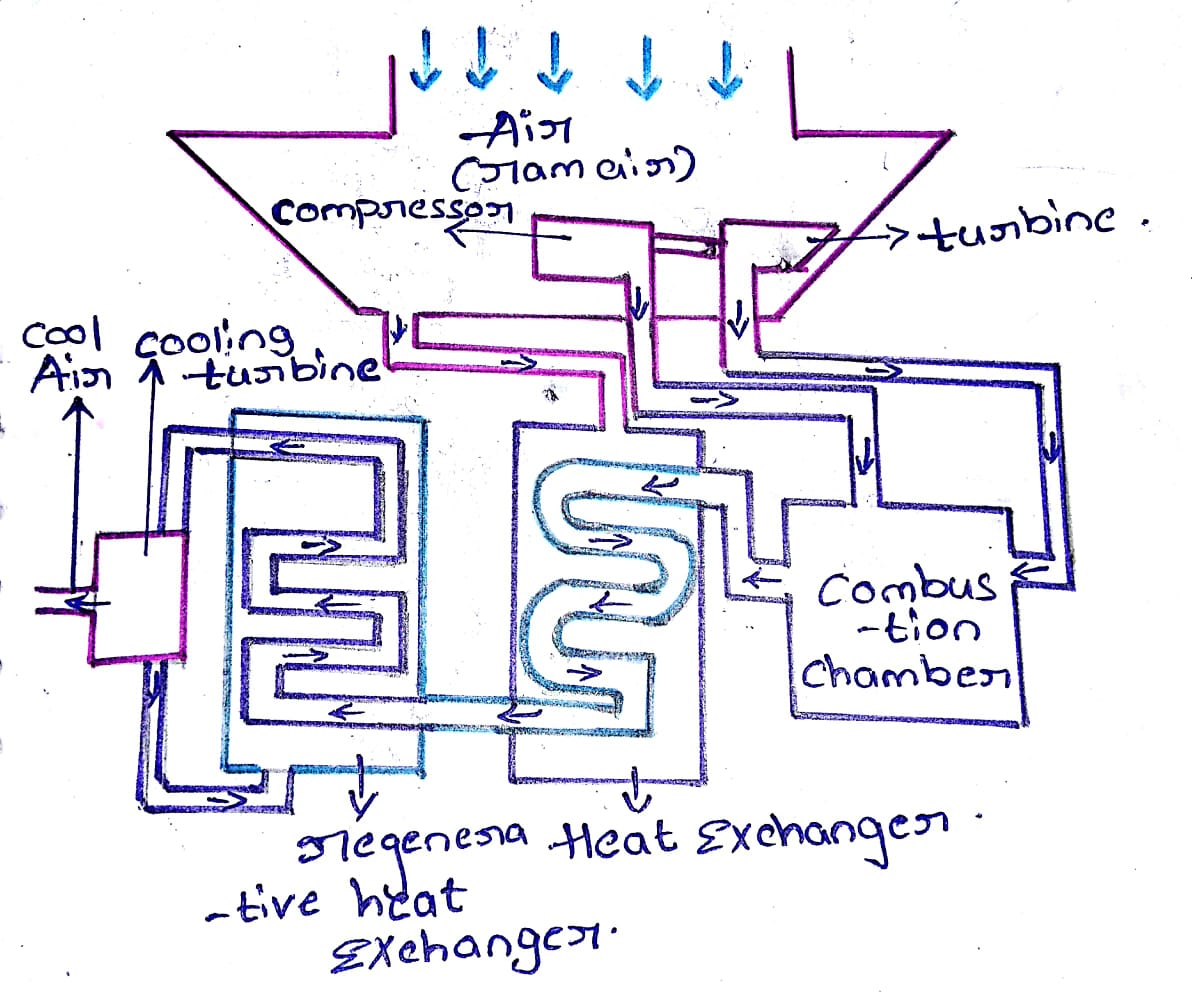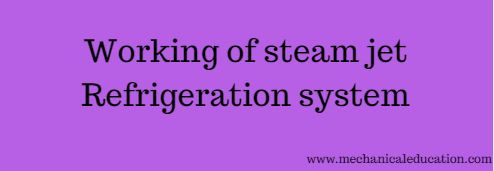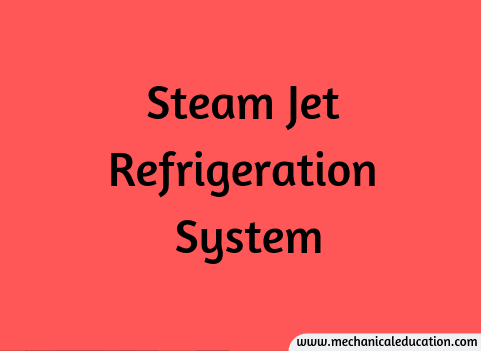What is Refrigerant Compressors?
Refrigerant compressors are essential components in refrigeration and air conditioning systems. Their primary function is to compress and circulate the refrigerant gas within the system, allowing it to undergo a phase change from a low-pressure, low-temperature gas to a high-pressure, high-temperature gas. This process is crucial for the overall refrigeration cycle, which involves the absorption and release of heat to achieve cooling.
There are different types of refrigerant compressors, each with its own characteristics and applications. The main types include:
- Reciprocating Compressors: These compressors use a piston-cylinder mechanism to compress the refrigerant gas. They are commonly used in smaller to medium-sized applications.
- Rotary Compressors: These compressors use a rotating mechanism to compress the refrigerant. Examples include rotary vane and rotary screw compressors. They are often used in air conditioning systems and some refrigeration applications.
- Scroll Compressors: Scroll compressors use spiral-shaped scrolls to compress the refrigerant. They are known for their efficiency and are commonly used in air conditioning systems.
- Centrifugal Compressors: These compressors use a high-speed rotating impeller to accelerate the refrigerant, converting kinetic energy into pressure. Centrifugal compressors are often used in large industrial refrigeration and air conditioning systems.
The compressor plays a crucial role in maintaining the proper temperature and pressure levels required for the refrigeration process. It is typically located in the outdoor unit of air conditioners or as part of the refrigeration system in appliances like refrigerators and freezers. The choice of compressor type depends on factors such as the size of the system, application, efficiency requirements, and cost considerations.
Classification of Compressors
Compressors can be classified based on various factors, including their design, working principle, and application. Here are some common classifications of compressors:
- Based on Working Principle:
- Positive Displacement Compressors:
- Reciprocating Compressors: Use a piston-cylinder mechanism to compress gas.
- Rotary Compressors: Use rotating mechanisms like vanes, screws, or scrolls to compress gas.
- Dynamic Compressors:
- Centrifugal Compressors: Use a high-speed rotating impeller to accelerate and compress gas.
- Positive Displacement Compressors:
- Based on Cooling Method:
- Air-Cooled Compressors: Use air to dissipate heat generated during compression.
- Water-Cooled Compressors: Use water as a cooling medium to dissipate heat.
- Based on Number of Compression Stages:
- Single-Stage Compressors: Compress the gas in a single step.
- Multi-Stage Compressors: Compress the gas in multiple stages to achieve higher pressures.
- Based on Lubrication:
- Lubricated Compressors: Use lubricating oil to reduce friction and seal clearances.
- Oil-Free Compressors: Operate without lubricating oil, suitable for applications where oil contamination is a concern.
- Based on Application:
- Refrigeration Compressors: Specifically designed for refrigeration systems.
- Air Compressors: Used for generating compressed air for various industrial applications.
- Gas Compressors: Designed for compressing gases other than air or refrigerants.
- Based on Drive Mechanism:
- Electric-Driven Compressors: Driven by electric motors.
- Engine-Driven Compressors: Driven by internal combustion engines.
- Based on Discharge Pressure:
- Low-Pressure Compressors: Handle lower pressure ranges.
- Medium-Pressure Compressors: Operate in intermediate pressure ranges.
- High-Pressure Compressors: Suitable for high-pressure applications.
- Based on Portability:
- Stationary Compressors: Fixed in one location and not easily moved.
- Portable Compressors: Designed for easy transport and mobility.
The choice of compressor type depends on factors such as the specific application, required pressure levels, efficiency, and environmental considerations. Different industries and applications may use a variety of compressors based on their unique requirements.
How Does a Refrigerant Compressors Work?
The operation of a refrigerant compressor is a crucial part of the refrigeration cycle, which is the process used in air conditioning systems, refrigerators, and other cooling applications. The basic working principle involves the compression of a low-pressure, low-temperature refrigerant gas into a high-pressure, high-temperature gas. Here’s a simplified explanation of how a refrigerant compressor works:
- Evaporation:
- The refrigeration cycle begins with the evaporator, where the low-pressure, low-temperature refrigerant (usually in a gaseous state) absorbs heat from the surrounding space, causing it to evaporate.
- Compression:
- The evaporated refrigerant gas is then drawn into the compressor. The compressor’s main function is to increase the pressure and temperature of the refrigerant.
- In a reciprocating compressor, a piston compresses the gas by moving up and down within a cylinder.
- In a rotary compressor, rotating mechanisms like vanes, screws, or scrolls compress the gas.
- High-Pressure, High-Temperature Gas:
- As the refrigerant is compressed, its pressure and temperature increase significantly, transforming it into a high-pressure, high-temperature gas.
- Condensation:
- The high-pressure, high-temperature refrigerant gas then flows to the condenser, where it releases heat to the surrounding environment. This causes the refrigerant to condense back into a liquid state.
- Expansion:
- The high-pressure liquid refrigerant passes through an expansion valve or an orifice, where it undergoes a sudden drop in pressure. This results in a decrease in temperature and the conversion of the liquid refrigerant into a low-pressure, low-temperature mixture of liquid and vapor.
- Evaporation (Again):
- The low-pressure, low-temperature refrigerant mixture returns to the evaporator, where it absorbs heat from the space being cooled, restarting the cycle.
This continuous cycle of evaporation, compression, condensation, and expansion is what enables the refrigeration system to remove heat from one location (the space being cooled) and release it to another (the surroundings). The compressor is a key component in this process, as it plays a central role in raising the pressure and temperature of the refrigerant, allowing the overall cycle to efficiently transfer heat and provide cooling.
Important Terms
Understanding the terminology associated with refrigerant compressors is essential for grasping their operation and performance characteristics. Here are some important terms related to refrigerant compressors:
- Compression Ratio: The ratio of the discharge pressure to the suction pressure. It indicates the degree of compression the refrigerant undergoes in the compressor.
- Capacity Control: The ability of a compressor to modulate its capacity based on the cooling load requirements. This is crucial for maintaining optimal efficiency under varying conditions.
- COP (Coefficient of Performance): A measure of the efficiency of a refrigeration system. It is the ratio of the heat removed from the refrigerated space to the energy input to the compressor.
- Discharge Line: The pipe or tubing through which the high-pressure refrigerant exits the compressor and travels to the condenser.
- Evaporator: The component in the refrigeration system where the low-pressure, low-temperature refrigerant absorbs heat and evaporates, causing cooling.
- Condenser: The component where the high-pressure, high-temperature refrigerant releases heat to the surroundings, causing it to condense back into a liquid state.
- Suction Line: The pipe or tubing through which the low-pressure refrigerant is drawn into the compressor from the evaporator.
- Superheat: The amount by which the temperature of a refrigerant vapor exceeds its saturation temperature at a particular pressure. Superheat is important for preventing liquid refrigerant from entering the compressor.
- Subcooling: The temperature difference between the liquid refrigerant and its saturation temperature at a particular pressure. Subcooling is important for ensuring the refrigerant is in a fully liquid state before entering the expansion valve.
- Oil Separator: In refrigeration systems using lubricated compressors, an oil separator is used to separate oil from the refrigerant before it enters the evaporator.
- Compressor Efficiency: The ratio of the actual work done by the compressor to the theoretical work required for the compression process. High efficiency is desirable for reducing energy consumption.
- Hermetic Compressor: A type of compressor where the motor and compressor are enclosed in the same housing and share the same refrigerant.
- Screw Compressor: A type of rotary compressor that uses intermeshing helical rotors to compress the refrigerant.
- Scroll Compressor: A type of compressor that uses spiral-shaped scrolls to compress the refrigerant.
- Vapor Compression Cycle: The refrigeration cycle that involves the compression and expansion of refrigerant to achieve cooling.
Understanding these terms provides insight into the operation, efficiency, and performance characteristics of refrigerant compressors in various cooling systems.
How do I select the right Refrigeration Compressor?
Selecting the right refrigeration compressor is crucial for the efficient and reliable operation of a refrigeration system. The choice depends on several factors, and here are key considerations to help you make an informed decision:
- Cooling Load Requirements:
- Determine the cooling load of the system, which is the amount of heat that needs to be removed. This is influenced by factors such as the size of the space, insulation, and heat-generating equipment.
- Refrigerant Type:
- Choose a compressor that is compatible with the refrigerant used in the system. Different compressors are designed for specific refrigerants, and using the wrong type can lead to inefficiency and potential system damage.
- System Type:
- Consider whether the application requires a low, medium, or high-temperature refrigeration system. Different compressors are designed to operate efficiently in specific temperature ranges.
- Capacity and Size:
- Determine the required cooling capacity of the compressor based on the system’s load. Compressors are available in various capacities, and selecting the right size ensures optimal performance.
- Compressor Type:
- Choose the appropriate compressor type for the application. Common types include reciprocating, rotary, scroll, and centrifugal compressors. Each type has its advantages and is suitable for specific applications.
- Efficiency:
- Consider the efficiency of the compressor, which is often expressed as the Coefficient of Performance (COP). A higher COP indicates better energy efficiency.
- Operating Conditions:
- Evaluate the operating conditions of the system, including ambient temperature and pressure. Compressors should be selected to operate effectively within the specified conditions.
- Reliability and Maintenance:
- Consider the reliability of the compressor and the ease of maintenance. Choose a compressor from a reputable manufacturer with a track record of producing reliable and durable products.
- Oil Management:
- For lubricated compressors, consider the oil management system. Some systems use oil separators and return mechanisms to ensure proper lubrication without causing issues like oil logging.
- Cost Considerations:
- Assess the initial cost of the compressor as well as long-term operational costs. While a more efficient compressor may have a higher initial cost, it can result in energy savings over time.
- Environmental Regulations:
- Be aware of environmental regulations related to refrigerants. Choose compressors that comply with current regulations and consider future environmental considerations.
- Manufacturer Support:
- Choose a compressor from a manufacturer that provides good technical support, documentation, and warranty coverage.
Before making a final decision, consult with professionals in the HVAC and refrigeration industry, and consider seeking advice from experienced engineers or consultants. Additionally, refer to the specific recommendations and requirements outlined in the system design and specifications.
Advantages of Refrigerant Compressors
Refrigerant compressors play a crucial role in various applications, providing several advantages in the field of refrigeration and air conditioning. Here are some key advantages of refrigerant compressors:
- Heat Transfer and Cooling:
- Refrigerant compressors facilitate the transfer of heat from one location to another, enabling the cooling of spaces, products, or equipment.
- Temperature Control:
- Compressors help in maintaining precise temperature control, essential in applications such as food storage, industrial processes, and climate control.
- Versatility:
- Refrigerant compressors are versatile and can be used in a wide range of applications, from residential air conditioning units to large industrial refrigeration systems.
- Efficiency:
- Many modern compressors are designed for high efficiency, contributing to energy savings and reduced operational costs.
- Compact Design:
- Compressors are often designed to be compact, allowing for flexibility in system installation and integration.
- Reliability:
- With proper maintenance, refrigerant compressors are generally reliable and can have long operational lifespans.
- Adaptability to Different Refrigerants:
- Compressors can be designed to work with various refrigerants, providing flexibility in system design and meeting environmental regulations.
- Temperature Range Coverage:
- Different types of compressors are available to cover a broad range of temperature requirements, from low-temperature applications like freezing to high-temperature applications in industrial processes.
- Ease of Control:
- Compressors can be easily controlled and modulated to adapt to changing cooling load conditions, contributing to system efficiency.
- Low Maintenance Requirements:
- When properly maintained, compressors can have low maintenance requirements, contributing to overall system reliability.
- High Cooling Capacities:
- Compressors are capable of handling significant cooling capacities, making them suitable for applications ranging from small household refrigerators to large industrial refrigeration systems.
- Availability of Different Types:
- Various compressor types, such as reciprocating, rotary, scroll, and centrifugal, allow for the selection of the most suitable type based on the specific requirements of the application.
- Quiet Operation:
- Some compressor types are designed for quiet operation, making them suitable for applications where noise is a consideration, such as residential air conditioning.
- Compatibility with HVAC Systems:
- Compressors are integral components in heating, ventilation, and air conditioning (HVAC) systems, contributing to the overall comfort and climate control of indoor spaces.
It’s important to note that the advantages of refrigerant compressors may vary depending on the specific type of compressor, the application, and the overall system design. Careful consideration of these factors is essential when selecting a compressor for a particular refrigeration or air conditioning system.
Disadvantages of Refrigerant Compressors
While refrigerant compressors offer numerous advantages, they also come with certain disadvantages and challenges. It’s important to consider these factors when designing or operating refrigeration and air conditioning systems. Here are some potential disadvantages of refrigerant compressors:
- Initial Cost:
- High-quality and high-efficiency compressors can have a significant initial cost, especially for large or specialized systems.
- Energy Consumption:
- Despite improvements in efficiency, some compressors may still consume a considerable amount of energy, contributing to operational costs.
- Environmental Impact:
- The use of certain refrigerants in compressors may have environmental implications, particularly if they contribute to ozone depletion or have high global warming potential (GWP).
- Maintenance Requirements:
- Compressors require regular maintenance to ensure optimal performance. Neglecting maintenance can lead to efficiency losses, increased energy consumption, and potential breakdowns.
- Noise Levels:
- Some types of compressors, particularly reciprocating compressors, can produce noise during operation, which may be a concern in residential or noise-sensitive environments.
- Limited Modulation Range:
- Some compressors have a limited capacity control or modulation range, making it challenging to precisely match the system’s cooling capacity to varying loads.
- Oil Management:
- Lubricated compressors require effective oil management systems to prevent issues like oil carryover into the refrigerant lines, which can reduce system efficiency.
- Wear and Tear:
- Compressors, especially reciprocating types, may experience wear and tear over time, potentially leading to decreased efficiency and the need for component replacement.
- Complexity of Design:
- Large industrial compressors and systems can be complex in design and may require specialized knowledge for proper installation, operation, and maintenance.
- Space Requirements:
- The physical size and space requirements of compressors may limit their use in certain applications, especially where space is limited.
- Refrigerant Leakage:
- Refrigerant leakage, whether due to poor system maintenance or system malfunctions, can contribute to environmental issues and may require proper handling and disposal.
- Temperature Limitations:
- Some compressors may have limitations in terms of the temperature range they can effectively handle, which may be a consideration in extreme temperature environments.
- Vibration and Alignment:
- Compressors can generate vibrations during operation, requiring proper installation and alignment to minimize these effects and prevent damage to the system.
- Compatibility Issues:
- Selecting the wrong compressor for a specific refrigerant or application can lead to compatibility issues, reducing efficiency and potentially causing system failures.
It’s crucial to carefully evaluate the advantages and disadvantages of different types of compressors, considering the specific requirements and constraints of the intended application. Additionally, staying informed about advancements in compressor technology and refrigerants can help mitigate some of these challenges.
Frequently Asked Questions – FAQ’s
Are there noise considerations with refrigerant compressors, and how can they be addressed?
Yes, some compressors can generate noise during operation. Selecting compressors designed for quiet operation, using sound insulation, and proper installation practices can help mitigate noise concerns in residential or noise-sensitive environments.
How can I control the capacity of a refrigerant compressor in my system?
Compressor capacity control mechanisms, such as variable speed drives, suction modulation, or multiple compressors staging, can be employed to match the cooling load and improve system efficiency.
What are the environmental considerations when selecting a refrigerant compressor?
Environmental considerations include the ozone depletion potential (ODP) and global warming potential (GWP) of the refrigerant used. Choosing low-GWP and environmentally friendly refrigerants aligns with sustainability goals.
Can compressors be used with different refrigerants, or are they specific to certain types?
Compressors are designed for specific refrigerants. Using the wrong refrigerant can lead to inefficiency, system damage, and safety hazards. Always follow the manufacturer’s specifications.
What maintenance practices are essential for prolonging the life of a refrigerant compressor?
Regular maintenance, including checking for refrigerant leaks, ensuring proper lubrication, and inspecting electrical components, is crucial for optimal compressor performance and longevity.
How does a compressor impact the energy efficiency of a refrigeration system?
Compressors with higher efficiency contribute to improved energy performance. The Coefficient of Performance (COP) is a measure of a system’s efficiency, and choosing an efficient compressor can lead to energy savings.
Why is refrigerant selection important when considering a compressor?
Compressors are designed to work with specific refrigerants. Choosing the right refrigerant ensures compatibility, efficiency, and compliance with environmental regulations.
How do I choose the right type of compressor for my refrigeration application?
The choice of compressor depends on factors such as the cooling load, refrigerant type, temperature requirements, and system efficiency goals. Consult with a qualified engineer or follow manufacturer guidelines for proper selection.
What are the common types of refrigerant compressors used in HVAC systems?
Common types include reciprocating, rotary, scroll, and centrifugal compressors. Each type has its own advantages and is suitable for specific applications based on capacity, efficiency, and other factors.
What is the role of a refrigerant compressor in a refrigeration system?
A refrigerant compressor is responsible for compressing the low-pressure, low-temperature refrigerant gas, raising its temperature and pressure to facilitate the heat transfer process in a refrigeration system.



